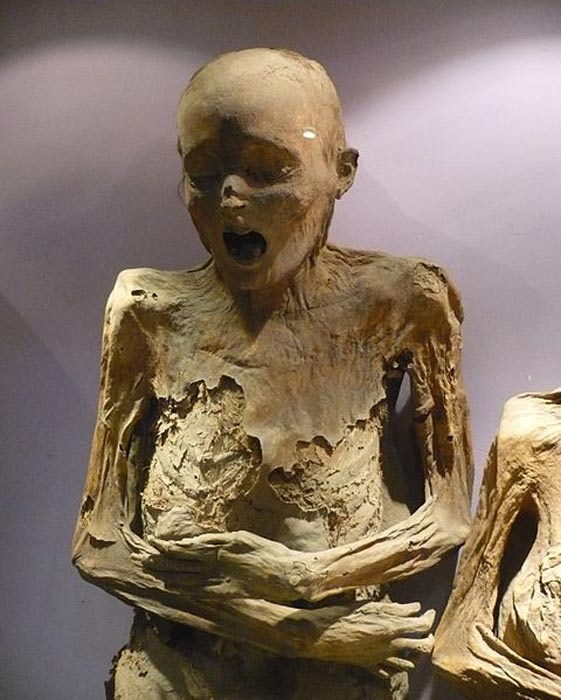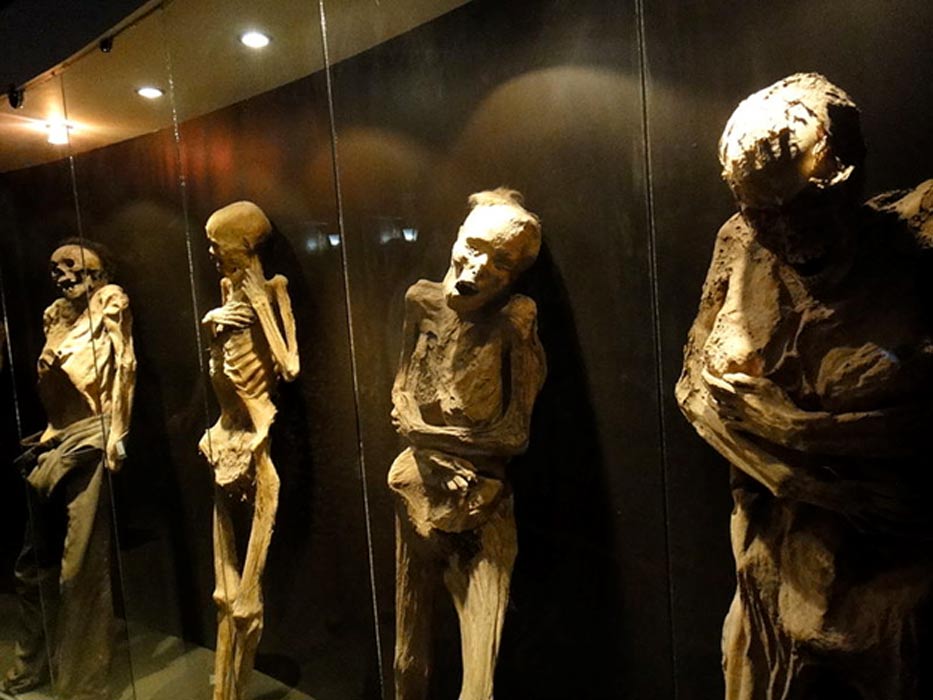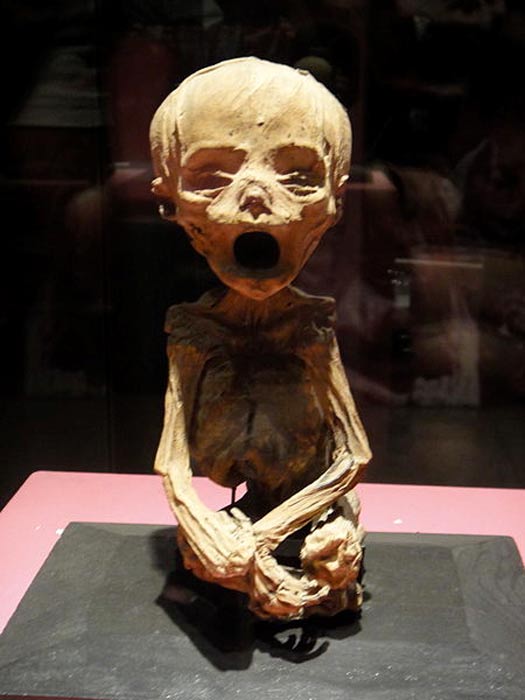The Guanajuato mummies are a collection of more than one hundred naturally preserved corpses discovered in the 19th century in the city of Guanajuato in central Mexico.
The history of these skeletons dates back to 1833, when cholera broke out in the city. Thirty years after the epidemic, the cemetery was full of corpses, and some were exhumed to make room for the most recent burials. As a consequence of the exceptionally arid conditions of the terrain, some of these bodies were discovered mummified at this time. Even more of these skeletons were unearthed, and the place where they were eventually kept became the Museo de las Momias de Guanajuato.
Payment of costs or removal of graves
In the 1860s, the city of Guanajuato ran into a major problem: its cemetery had reached its maximum capacity. Therefore, it was decided to impose a tax on the relatives of those buried in the cemetery. This tax was collected between 1865 and 1958 for a total of 170 pesos in a single payment or 50 pesos annually for three years. After payment of this fee, the authorities left the deceased alone. The consequence of not doing so, however, was the ‘eviction’ of the deceased from his grave.
Unfortunately, most people could not afford to pay the fee or simply chose not to. As a result, 90% of the graves were displaced over time. The first corpse to be ‘evicted’ was apparently that of a French doctor named Remigio Leroy. Since this doctor was a foreigner who died while visiting Guanajato, it is very likely that the authorities were unable to contact his loved ones to inform them of the new fee system. Thus, his corpse was the first to be removed from his grave.

One of the mummies in the Museo de las Momias de Guanajato (Mexico). (Public Domain)
The surprising discovery of mummies
Remigio Leroy’s body was exhumed on June 9, 1865 and, to everyone’s surprise, it was found to be quite well preserved. As more bodies of this variety were unearthed, authorities in Guanajuato were forced to determine what to do with them. Then it was determined that the corpses would be relocated to an ossuary located in the cemetery’s cellar. If their relatives paid the fee, they would be allowed to recover and rebury the remains of their loved ones. It seems almost no one paid the fee, so the charnel house was quickly filled with corpses.
Petition to rebury remains of Siberian Ice Princess deniedThe Catacombs of the Capuchins in PalermoReburied the remains of the mummified bishop in whose coffin was a fetusSome of the mummies from the Guanajuato museum. (CC BY SA 4.0)

People began to flock to the cemetery with the intention of seeing the ghoulish remains kept in the ossuary as soon as word got out about the existence of this “mummy shop”. People who wanted access to the ossuary to view the corpses were charged a modest fee by cemetery employees, who saw this as an opportunity to generate additional income. This is how the Museum of the Mummies of Guanajuato was born. Although the grave tax was repealed in 1958 and the practice of exhuming corpses was prohibited, the Guanajuato mummies remained a component of the new museum.
A popular destination for visitors
In 1970, the Mexican horror film Santo versus the Mummies of Guanajuato was released. In the film, a luchador named Santo takes on the magically resurrected corpses of Guanajuato. Thanks to this film, the museum was able to consolidate its position as a popular tourist destination in Mexico.
Visitors’ perspectives on mummies have evolved over time. The corpses, which were initially considered to be tenants of a cemetery whose graves their relatives did not pay rent for, gradually aroused the interest and fascination of the public. Over the years, however, visitors have developed a more respectful attitude towards these human remains.
For many years, as a sign of this evolution, the corpses were limited to resting against the walls of the ossuary so that the living could observe them. Currently, glass ballot receptacles are allowed for added security. Some of the carcasses have also recently been the subject of scientific investigation to learn more about these individuals.

Mummy of a baby. Museum of the Mummies of Guanajuato. (CC BY SA 4.0)
Top image: Various mummies from the Museo de las Momias in Guanajuato, Mexico. Photography: Russ Bowling/ CC BY 2.0








